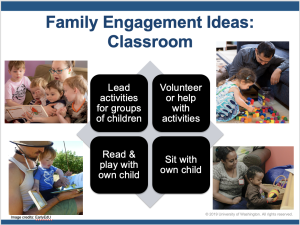Slideshow Presentations
Creating
A slideshow presentation should serve as a visual aid that reinforces your overall message. Before creating slides, write your slide notes. Your notes contain the detailed information you want to say to the audience. Once you have your notes, you can better determine what information belongs on each slide to best illustrate your points.
Here are a few things to keep in mind for an effective slideshow presentation:
- Choose text and visual elements that reinforce your message. Stick to concise bullet points that help your audience digest and retain key points more easily. Use good-quality images that complement what you are saying.
- Use a consistent design throughout. Too many colors and fonts can be distracting to viewers.
- Avoid flashy transitions, animations, and sound effects. These often subtract from rather than add to the effectiveness of your presentation.
- Use an easy-to-read font that is large enough to see clearly. Sans Serif fonts (like Arial or Helvetica) no smaller than size 24 is a good benchmark.
- Choose colors wisely. Use contrasting colors for text and background so your slides are easy to read (i.e. light text on a dark background or dark text on a light background).
Performing
One of the most important strategies for giving an effective slideshow presentation is to be prepared. Practice what you want to say ahead of time using the speaker notes so you can avoid reading each slide word-for-word. Time yourself to see how long it takes to get through all your slides and adjust as necessary. If you can, ask someone who hasn’t heard your presentation to listen to it and give you feedback. You can even practice in front of a mirror! Check to make sure your information is delivered clearly and that your slides reinforce your message in a way that’s easy to follow.
When you present, try your best to engage with the audience. It’s best to think of your presentation as interactive speaking and listening rather than a one-way exchange of information.
Fear of Public Speaking
It’s common to feel anxious when you have to speak in front of a group of people. Fortunately, public speaking is something that gets easier with practice. Here are a few tips from executive speech coach and professor of public speaking at Georgetown University, Sarah Gershman:
- Think about your audience: When preparing your presentation, begin by considering who will be listening, why they are there, and what they need. Identify the audience’s needs, both spoken and unspoken, and craft a message that speaks directly to them. Spending time considering the needs of your audience can help shift the focus away from your own nerves.
- Right before you speak, refocus your brain: Most people are the most nervous right before they speak. Studies have shown that kindness and generosity helps calm the amygdala (the part of your brain activating feelings of fear and anxiety). Instead of focusing on yourself and whether you will mess up your presentation, turn the focus to your audience. Approach your presentation with a spirit of generosity and tell yourself you are there to help them.
- While you are speaking, make eye contact: Try to sustain eye contact with one person in the audience per thought. While this may be difficult at first, with practice you will find that you feel less nervous having a series of one-on-one conversations rather than speaking to a whole group of people at once.
 Learning Lab
Learning Lab
Read the notes below and create a slide based on the information.
“Families may be involved in the classroom in a variety of ways. It is up to each family to decide the amount of time and their level of comfort, but you can create opportunities for families to feel welcome and meaningfully engaged in the room.
When educators are flexible to meet the families’ interests and needs, families can get involved in a variety of ways:
Sitting with their own child: This may be to observe or interact. A family member may prefer to observe in the classroom to see what other adults do in the classroom or how their child participates. A parent might sit with their child at snack or circle time.
Read and play with their own child: Family members may want to be more active in the classroom but may feel most comfortable focusing on their own child. For example, a parent may pretend to eat food with the child in the dramatic play area, or may sit in the book area and read a book one-on-one.
Volunteering or helping with activities: Family members may want to help in the classroom. They may work with other adults to help out with an art activity, for example, or join a group of children in an ongoing activity.
Leading activities for groups of children: Finally, family members may feel comfortable growing into leadership opportunities in the classroom. For example, a father may volunteer to read a story to the whole class or play a musical instrument for the group.”
Sample slide

